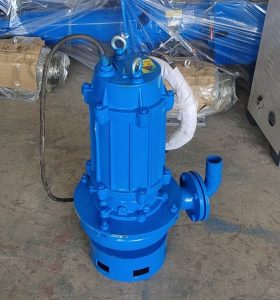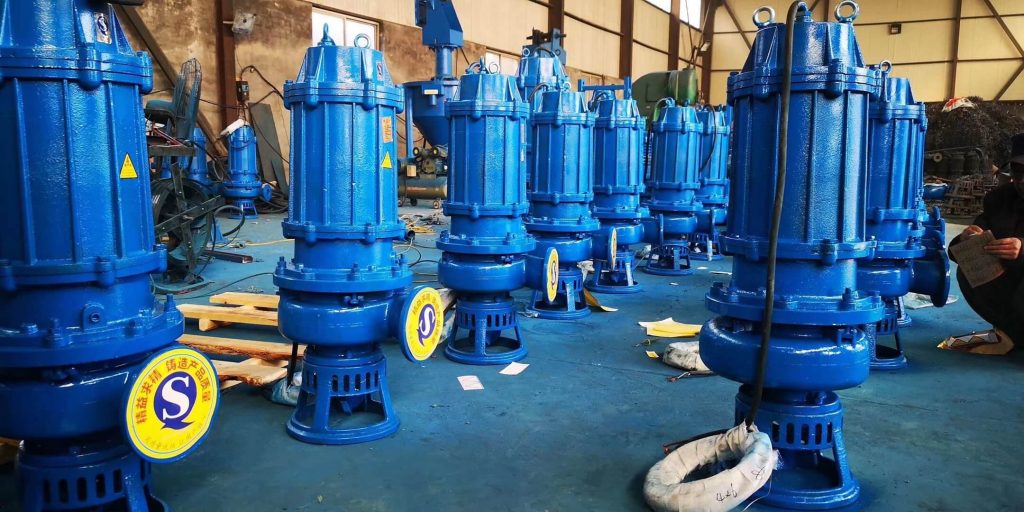Precautions & Maintenance For Using Submersible Slurry Pumps
Various problems will inevitably occur in the daily operation of the submersible slurry pump. In order to prolong its service life and ensure the normal operation of the submersible pump and related systems. Submersible pumps are relatively common equipment in sewage treatment systems, and they also play an important role in sewage treatment systems. Therefore, it is necessary to conduct comprehensive inspections before use, comprehensive maintenance during operation, and comprehensive investigation and maintenance after failures. It is also a major focus of the operation and maintenance of the entire sewage treatment system.
Submersible Slurry Pump

Submersible slurry pumps are the main equipment for lifting water. When in use, the whole unit is submerged in water for operation. Obtaining groundwater to the surface is used for daily water use, mine rescue, industrial cooling, farmland irrigation, seawater submersible pump enhancement, ship load regulation, and can also be used for fountain scenes. To obtain groundwater, it can also be used for water-lifting projects such as rivers, reservoirs, and canals.
Preparation before use of submersible slurry pump
1. Check whether the cables are cracked or broken. Before use, not only observe the appearance of the cable, but also use a multimeter or a megohmmeter to check whether the cable is connected. There should be no oil leakage at the cable outlet.
2. Before the new pump is used or the long-term standby pump is started, use a megohmmeter to measure that the insulation of the stator to the casing is not less than 1 megohm, otherwise the motor windings should be dried to improve the insulation level.
3. Check the submersible pump for oil leakage. The possible oil leakage paths of the submersible electric slurry pump include the cable connection, the seal at the refueling screw in the sealing chamber and the O-ring seal at the seal. Check to see if there is a real oil leak. The reason for the oil leakage at the refueling screw is that the screw is not tightened, or the oil-resistant rubber gasket under the screw is damaged. If it is determined that the O-ring seal leaks oil, it is mostly because the O-ring seal fails. At this time, the electric pump needs to be disassembled to replace the sealing ring.
4. Before the submersible pump that has been out of use for a long time is used again, the impeller should be rotated before starting to prevent the parts from rusting and starting without water and burning the motor windings.
Precautions for submersible slurry pump operation
1. Can not be grounded
The submersible pump only needs to be grounded to ensure personal safety during use. If there is no maintenance and grounding, once the casing leaks electricity, the water at the water outlet of the submersible pump and the surface of the pumped water will be charged, which will endanger the safety of humans and animals, and waste a lot of electricity. When the casing of the submersible pump leaks, the current forms a closed loop through the metal casing of the submersible pump, the maintenance grounding wire, the grounding body, the earth, the working grounding wire of the transformer and the power supply. When the leakage current is too large, especially when the front touches the shell, the maintenance device of the submersible pump can be activated (fuse blown or air switch tripped), and the power supply of the leakage submersible pump can be blocked.
2. Do not install a leakage protector
When the submersible pump works in the water, it is easy to leak electricity, which will cause power loss and even cause electric shock. If a leakage protector is installed, as long as the leakage value of the submersible pump exceeds the operating current value of the leakage protector (usually not exceeding 30mA), the leakage protector will cut off the power supply of the submersible pump.
3. The motor rotates in the opposite direction
Nowadays, there are many types of submersible pumps that can produce water in both forward rotation and rotation, but the water output is small and the current is large during rotation, and the motor winding will be damaged if the rotation time is too long. Therefore, the submersible pump should be connected to the power supply before entering the water to check whether the rotation direction is accurate. If the impeller of the three-phase submersible pump is reversed, it should be stopped immediately, and the wiring of any two phases of the three-phase core wires in the cable can be exchanged.
4. Use in silt environment
If the submersible pump sinks into the mud during use, it will cause poor heat dissipation and burn out the motor windings. Therefore, the submersible pump must not be used in the muddy environment. In order to prevent the submersible pump from sinking into the mud, the mud in the working environment of the submersible pump should be removed before the submersible pump is launched. When conditions permit, a gate guard should be used to cover the submersible pump to prevent waste from blocking the inlet gate, causing the motor to heat up and the water to be blocked.
5. Put it in the water for a long time and do not use it
If the submersible pump is not used continuously after going down the well, it will corrode for a long time, making it unable to start. Therefore, the deactivated submersible pump should not be placed in the water regardless of whether it is in the water. It should be turned on once a week and run for 5 to 10 minutes. When not in use for a long time, it is best not to soak it in water for a long time. It should be placed in clean water and powered on for a few minutes to clean the mud inside and outside the pump, and then lift the water surface to dry it. Do a major inspection, disassemble all parts for repair, wipe, rust and descaling. The wearing parts are replaced, reassembled, painted to prevent rust, and placed in a dry, non-corrosive gas warehouse.
Maintenance of submersible slurry pumps
1. Always refuel and change the oil regularly. Every 1000 hours of operation of the submersible electric pump, the sealing oil must be replaced, and the oil inside the motor must be replaced once a year. For the water-filled submersible pump, the upper and lower end covers, the skeleton oil seals in the bearing chamber and the lithium-based lubricating oil need to be replaced regularly to ensure a good lubrication state.
2. Reasonable custody. When not in use for a long time, the submersible sewage pump should not be immersed in water for a long time, and should be stored in a dry and ventilated room. When storing the rubber cable of the submersible pump, avoid sunlight exposure, otherwise it will be easy to age, and the surface will have cracks. Serious consequences such as short circuit or zero insulation resistance of winding to ground.
3. Carry out anti-rust treatment on the surface of the submersible pump in time. After one year of use, the submersible pump should be painted and rust-proof in time according to the corrosion of the surface of the submersible pump. The internal paint to prevent rust depends on the pump type and corrosion conditions.
4. Regular maintenance After every two years of use, the submersible pump should be fully inspected, all parts should be folded, checked, cleaned, lubricated, and then reassembled.
5. Storage and maintenance When the submersible pump is not used for a long time, it should not be immersed in water. It should be lifted to the ground, wiped off the water stains, and hung in a dry and ventilated room.

The submersible pump is more important when choosing and purchasing. The model of the pump should be selected according to the actual situation of the water source water quality, the working time and the pump water volume and other requirements. First, the dust should be selected to be larger than the drop between the water intake and the water outlet, and then the flow rate of the pump should meet the requirements of drainage and watering. Our Walker slurry pump has a relatively long service life and requires little maintenance, which can effectively save production costs.
